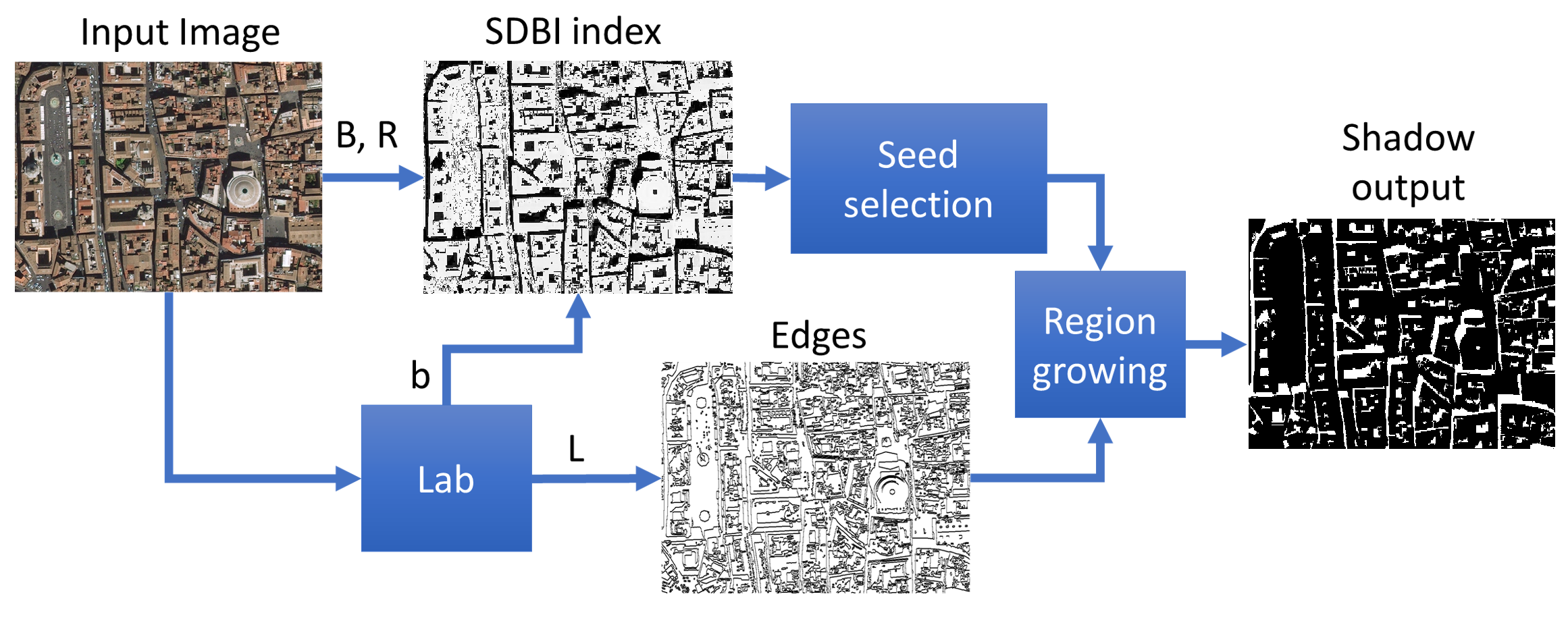Shadow Detection
Principal Investigator(s)
Emmett Ientilucci
Research Team Members
Prasanna Reddy Pulakurthi
Project Description
Shadows are present in a wide range of aerial images from forested scenes to urban environments. The presence of shadows degrades the performance of computer vision algorithms in a diverse set of applications. Therefore, detection and mitigation of shadows is of paramount importance and can significantly improve the performance of computer vision algorithms. Although there are several existing approaches to shadow detection in aerial images, correctly detecting shadows in the vegetation and water areas is still a challenge in some cases.
In this research, we developed five new approaches to shadow detection in aerial imagery. This includes two new chromaticity based methods (i.e., Shadow Detection using Blue Illumination (SDBI) and Edge-based Shadow Detection using Blue Illumination (Edge-SDBI)) and three machine learning methods consisting of a neural network (i.e., Shadow Detect Neural Network (SDNN)), and two convolutional neural networks (i.e., Variable Sized Kernels Convolutional Neural Network (VSKCNN) and the Shadow Detect Convolutional Neural Network (SDCNN)). The SDBI index is specially designed to accurately classify shadow pixels from vegetation. These algorithms are tested on four different aerial imagery data sets. Results are assessed using both qualitative (visual shadow masks) and quantitative techniques. Conclusions touch upon the various trades between these approaches, including speed, training, and accuracy. This research has been submitted for publication to IEEE Transactions on Geoscience and Remote Sensing (TGARS).

